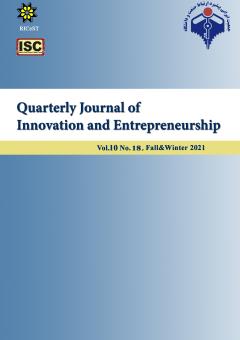-
-
List of Articles
-
Open Access Article
1 - Identify the distinguishing dimensions of the agent in the native international businesses in the field of ICTv
davood feiz ali akbar jalali Azim zarei Ehsan Souri -
Open Access Article
2 - Rooting of Loose Engagement of Iranian Universities with Industry from the Higher Education Informants
reza mahdi masoud shafiee -
Open Access Article
3 - Assessing the effect of macroeconomic shocks on systemic risk of the banking system using the SVAR model in Iran
ali ostadhashemi seyed jalal sharif ali Souri -
Open Access Article
4 - Affecting Factors and challenges on Technology Commercialization in ACECR
atefeh zolfaghari Hesam Zand Hesami Morteza Akbari hamid amin esmaili -
Open Access Article
5 - Presenting a Model to Improve the Performance of Government Organizations with Emphasis on Innovation and Organizational Values: An Interpretive Structural Modeling Approach
Ismail Ghaderifar Mir Hadi Moazen Jamshidi abbasali Arfa -
Open Access Article
6 - Prioritizing obstacles of industry - university interaction in order to develop of intelligent urban transportation infrastructures using Fuzzy AHP
Hamzeh Amin-Tahmasbi aboozar ghorbani -
Open Access Article
7 - Technological cooperation, university reproductive company, information and communication technology.
Fazel Hajizadeh Ebrahimi Abolfazl Kazazi -
Open Access Article
8 - The relationship between corporate entrepreneurship and urban sustainable development by using the pattern of entrepreneurial city
Babak Ziyae mehran rezvani Mohammad Eynolghozat -
Open Access Article
9 - Provide a model for successful entry into the food products market of the region (Case study of Iraq)
Mohammad talari mohammad reza fallah parisa esmaeili -
Open Access Article
10 - Providing university management model based on green thinking
Golshan Moradi nader soleymani hamid shafizadeh -
Open Access Article
11 - A dairy Products Green Supply Chain model with Emphasis on Customer Satisfaction: Combining Interpretive Structural Modeling Approach and Analytical Network Process
heydar Safari rashid Zolfaghari Zafarani Mohsen Mohammadian Saravi -
Open Access Article
12 - Presenting a human resource development model focusing on productivity in the country's tax administration using the structural equation approach
Mansour Gholizadeh reshid Zolfaghari Zafarani Mohsen Mohammadian Saravi
-
The rights to this website are owned by the Raimag Press Management System.
Copyright © 2017-2025







